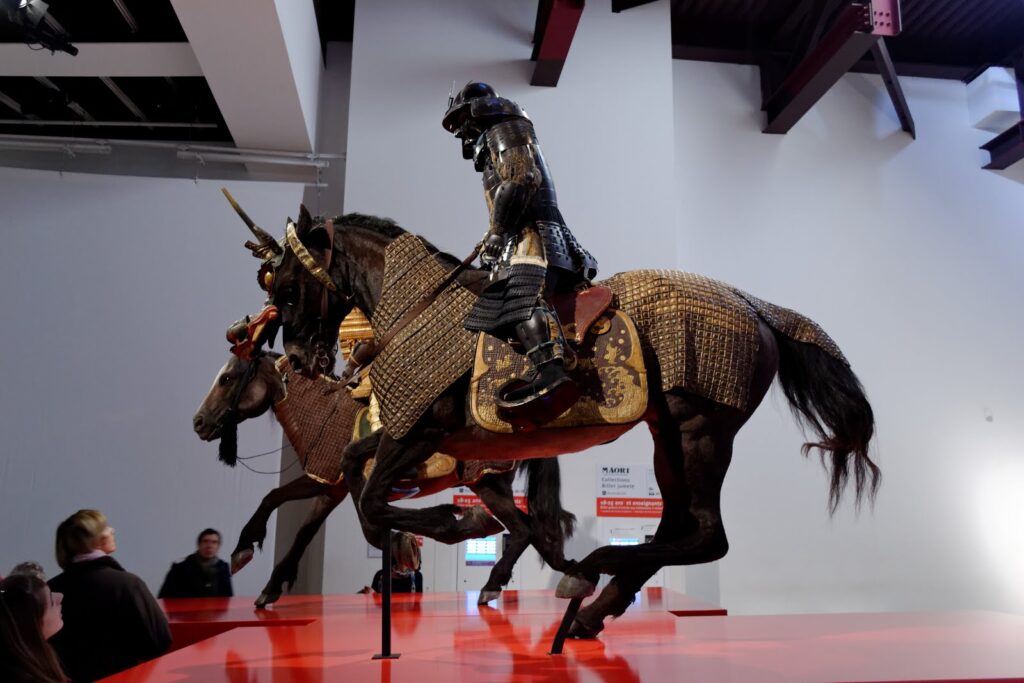In the annals of Japanese warfare, the bond between samurai and their steeds stands as one of history’s most profound military partnerships. These war horses, known as “koma” or “uma,” were far more than mere transportation—they were trusted companions, status symbols, and often the difference between victory and defeat on the battlefield. From the Heian period through the final days of the samurai class during the Meiji Restoration, certain horses achieved legendary status through their remarkable deeds, unwavering loyalty, and exceptional qualities. Their stories remain immortalized in scrolls, poems, and historical records, offering us a glimpse into the special relationship between Japan’s warrior elite and their equine partners. This exploration of Japan’s most legendary samurai horses reveals not just tales of remarkable animals, but provides deeper insight into the samurai culture that revered them.
Ikezuki: The Thunder Horse of Minamoto no Yoritomo
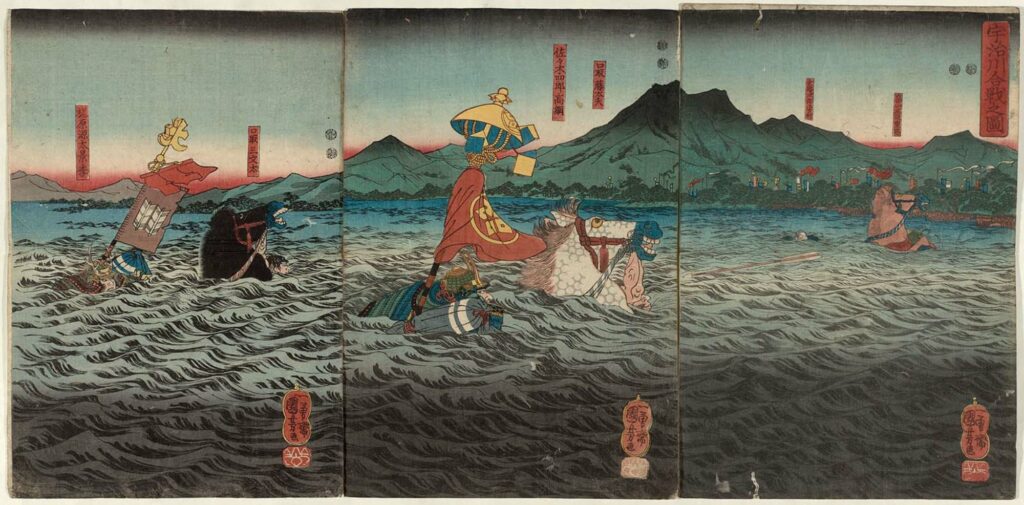
Among the most celebrated steeds in Japanese history, Ikezuki served the first Kamakura shogun, Minamoto no Yoritomo, during the tumultuous Genpei War (1180-1185). Described as having a coat “the color of a chestnut ripening in autumn,” this powerful horse earned his name from his extraordinary ability to cross rivers and lakes without hesitation. Folklore claims Ikezuki possessed supernatural stamina, carrying his master through multiple battles without showing fatigue. One famous account tells how Ikezuki once swam across a flooding river that had stopped an entire army, demonstrating intelligence by finding the safest crossing point during a critical military campaign. His legend grew so great that rival clans supposedly plotted to steal him, believing that possessing Ikezuki would transfer Yoritomo’s military fortune to them.
Surusumi: The Swift Black Shadow
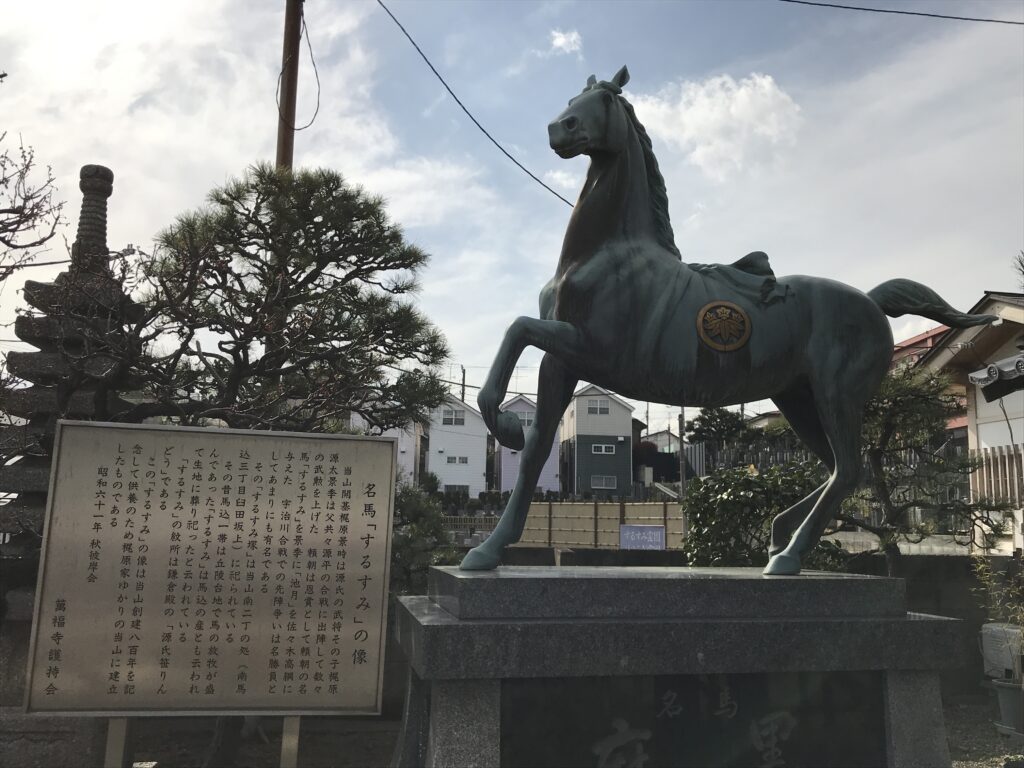
Surusumi, whose name translates to “rubbed black ink,” was the prized warhorse of the legendary general Minamoto no Yoshitsune. This midnight-black stallion was renowned for his exceptional speed and agility, traits that complemented Yoshitsune’s daring battle tactics perfectly. Historical accounts describe Surusumi leaping down the precipitous Hiyodori Pass during the Battle of Ichi-no-Tani in 1184, a feat so impressive that it was commemorated in countless artworks and poems. The horse’s remarkable sure-footedness allowed Yoshitsune to lead a surprise attack down what was considered an impassable cliff, resulting in a decisive victory against the Taira clan. Some chronicles suggest Surusumi possessed an almost supernatural bond with Yoshitsune, anticipating his commands before they were given and navigating treacherous terrain in complete darkness without faltering.
Onikage: The Demon Shadow Horse
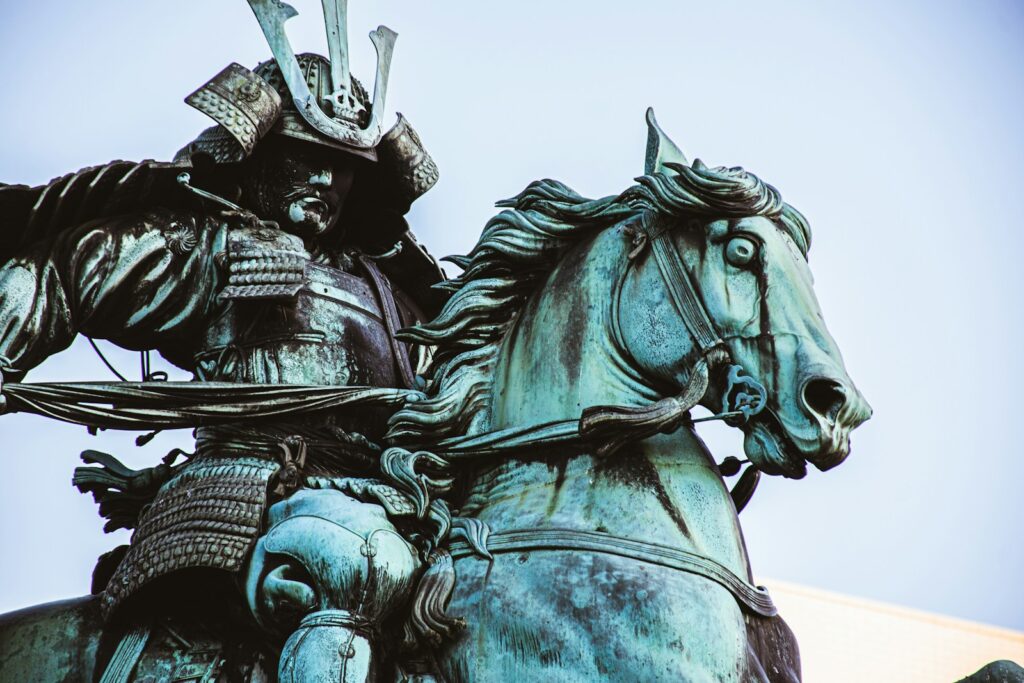
Perhaps no samurai horse has been more mythologized than Onikage, the legendary mount of the “Demon King” Oda Nobunaga. With a name meaning “demon shadow,” Onikage was described as a massive black stallion with unmatched strength and an intimidating presence on the battlefield. Contemporary accounts claim the horse stood taller than any other in Japan, with flaring nostrils and eyes that seemed to glow red during battle charges. Nobunaga, who unified much of Japan in the 16th century, reportedly valued Onikage above all his possessions, trusting the horse to carry him through the chaos of combat without fear. When Nobunaga was betrayed and forced to commit seppuku at Honnō-ji in 1582, legends say Onikage escaped the burning temple and roamed the countryside for years, unable to accept a new master. Some rural traditions maintain that Onikage’s descendants still run wild in remote mountain regions, carrying the spirit of the unconquerable warlord.
Tayuguro: The Pearl Among Steeds

Tayuguro served as the favored mount of Date Masamune, the powerful “One-Eyed Dragon” daimyo of northern Japan. This distinctively patterned horse, described as having a glossy black coat with a perfectly symmetrical white pattern on its forehead, was reportedly selected from hundreds of potential war horses for the discriminating general. According to historical accounts, Tayuguro displayed remarkable intelligence, responding to verbal commands and even learning to kneel on command to allow the one-eyed Masamune easier mounting access. During the Siege of Osaka in 1615, Tayuguro carried Masamune through enemy lines multiple times, seemingly impervious to arrows and gunfire. The Date clan records claim that when Masamune established diplomatic relations with Pope Paul V, he sent detailed illustrations of Tayuguro as gifts, causing European horse breeders to marvel at the Japanese warhorse’s unique characteristics.
Matsukaze: The Wind Through Pines
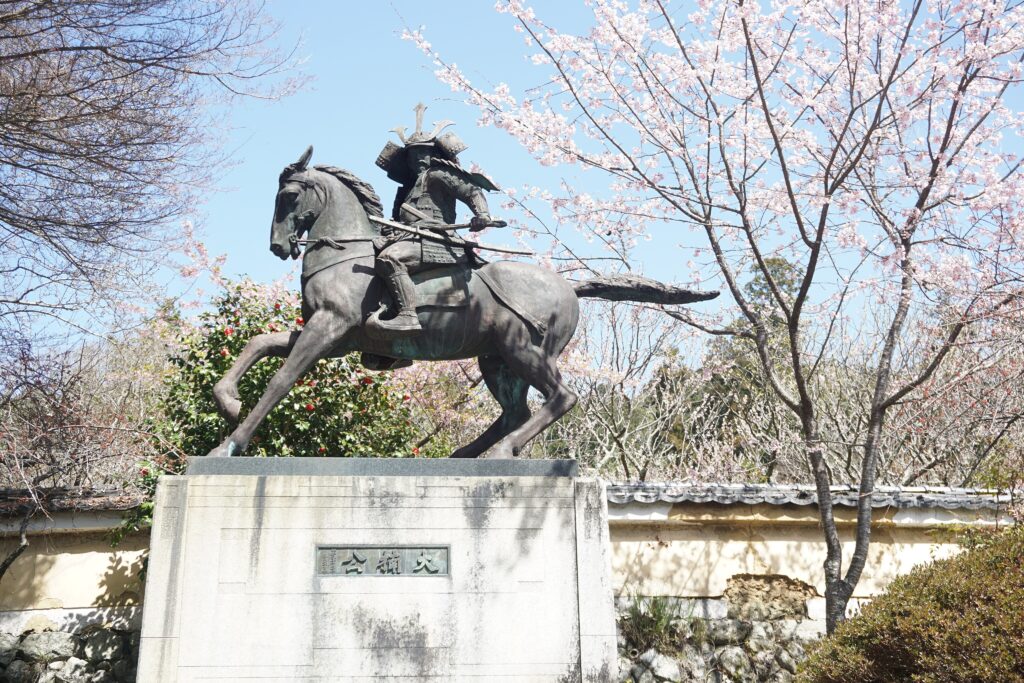
Named for the poetic sound of wind blowing through pine trees, Matsukaze was the legendary steed of Kusunoki Masashige, the embodiment of samurai loyalty. This dappled gray mare was noted for her unusual combination of docile temperament off the battlefield and ferocious courage during combat. Historical chronicles describe how Matsukaze carried the fatally wounded Masashige from the Battle of Minatogawa in 1336, remaining steadfast even as arrows struck her flanks. According to legend, after Masashige committed ritual suicide following his defeat, Matsukaze refused food and water, dying of grief shortly thereafter in a powerful demonstration of the bond between horse and rider. The tale of Matsukaze became a powerful symbol of loyalty in later samurai literature, with Edo period artists frequently depicting the faithful horse standing guard over her master’s grave. Some Shinto shrines dedicated to Kusunoki Masashige include small memorials to Matsukaze, acknowledging the horse’s place in Japan’s cultural memory of perfect loyalty.
Chidori: The Thousand Birds

The legendary warlord Takeda Shingen, master of cavalry tactics during Japan’s Warring States period, rode a horse whose name has become synonymous with speed and grace. Chidori, meaning “thousand birds,” was a spotted white mare known for her distinctive gait that appeared to barely touch the ground, giving the impression she was flying rather than running. According to the Koyo Gunkan military chronicles, Chidori could maintain a full gallop longer than any other horse in the Takeda cavalry, which was already renowned as Japan’s finest. The mare’s most famous moment came during the fourth battle of Kawanakajima in 1561, where she reportedly carried Shingen through eight hours of continuous combat without faltering. Historical accounts note that enemy generals could always locate Shingen during battle by looking for the distinctive spotted coat of Chidori, leading some to believe Shingen deliberately rode such a recognizable mount as a challenge to his opponents.
Kurosatsuma: The Black Warlord
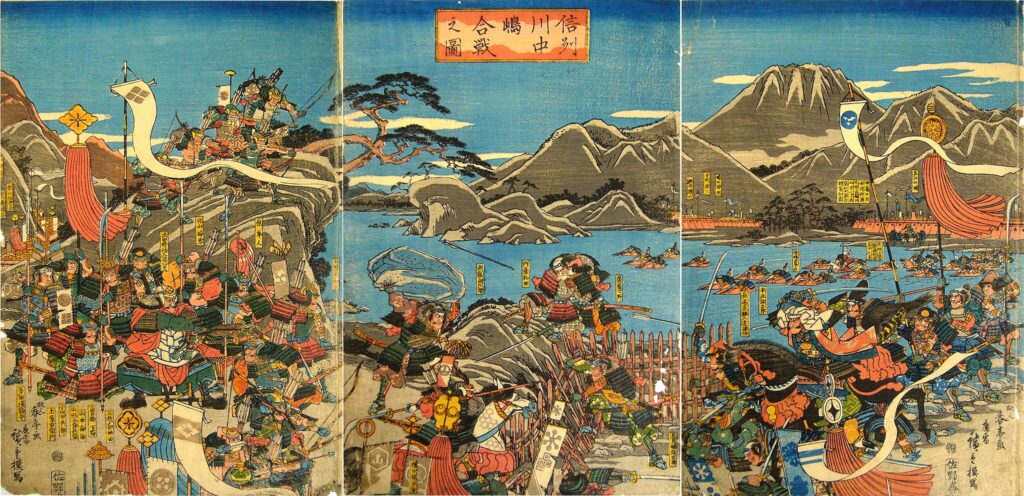
Kurosatsuma was the principal warhorse of Uesugi Kenshin, Takeda Shingen’s great rival and the “God of War” of Echigo Province. This massive black stallion with uncommonly large hooves was specifically bred for the cold, mountainous terrain of northern Japan. According to the Uesugi family records, Kurosatsuma could traverse snow-covered mountain passes that stopped other horses, making possible Kenshin’s famous surprise winter attacks. The horse’s most celebrated feat occurred during the Battle of Tedorigawa in 1577, where Kurosatsuma carried Kenshin through flooded rice fields to launch an unexpected attack against Oda Nobunaga’s forces. Remarkably, contemporary accounts note that Kurosatsuma was trained to respond to battle drums, automatically charging or retreating based on specific rhythms, freeing Kenshin to focus entirely on combat. When Kenshin died under mysterious circumstances in 1578, tradition holds that Kurosatsuma was ritually sacrificed to accompany his master to the afterlife, although historical evidence for this remains contested.
Wakamurasaki: The Young Purple

Perhaps the most romantic tale among legendary samurai horses belongs to Wakamurasaki, the beloved mare of poetic samurai Hosokawa Gracia, daughter of the warlord Akechi Mitsuhide. Unlike typical warhorses, Wakamurasaki was prized for her unusual purple-tinged roan coat and gentle disposition rather than battle prowess. Historical documents describe how Gracia, educated in both samurai martial arts and refined courtly arts, trained Wakamurasaki to respond to musical cues from a flute rather than traditional commands. When civil war erupted following Mitsuhide’s assassination of Oda Nobunaga, Wakamurasaki carried the pregnant Gracia safely through enemy territory to sanctuary, navigating solely by moonlight for three consecutive nights. Later accounts suggest that when Gracia was forced to commit suicide during the Siege of Osaka rather than surrender to enemy forces, Wakamurasaki escaped captivity and returned to the Hosokawa family lands on her own, traveling over 200 miles without human guidance.
Shiroikaze: The White Wind

The legendary white stallion Shiroikaze served the master swordsman Miyamoto Musashi during his later years, after the warrior had survived over sixty duels and begun focusing on artistic and philosophical pursuits. According to Musashi’s own writings, Shiroikaze possessed an unusually calm temperament that complemented his evolving philosophy of controlled power rather than aggressive force. Chronicles describe how the horse would stand completely motionless during Musashi’s meditation sessions, sometimes remaining still for hours at a time without restlessness. Most remarkably, Shiroikaze was trained to respond to drawing techniques from Musashi’s famous two-sword style, moving in perfect coordination with his master’s swordsmanship. When Musashi retreated to Reigandō cave in his final days to write his classic “Book of Five Rings,” tradition holds that Shiroikaze remained at the cave entrance, turning away all visitors except those bringing food and writing materials, somehow understanding his master’s need for isolation.
Kagemaru: The Shadow Circle
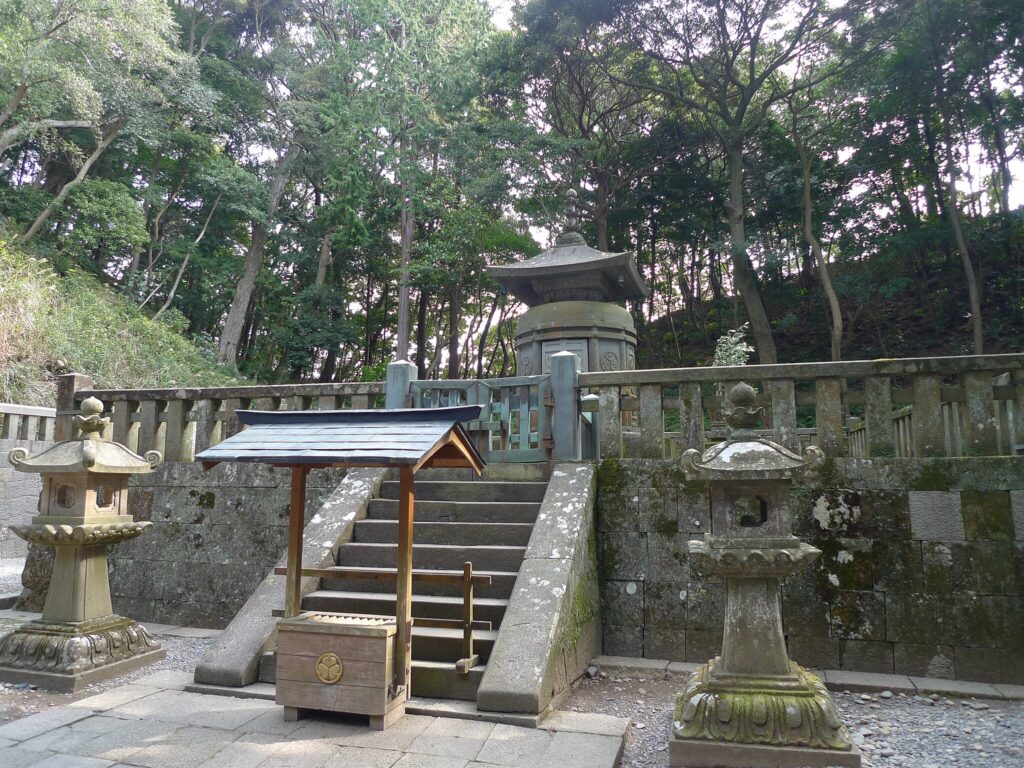
Among the legendary horses of the late feudal period, few were as celebrated as Kagemaru, the principal mount of Tokugawa Ieyasu before he became shogun. This dark bay stallion with a perfect circular white marking on his forehead was renowned for his extraordinary intelligence and calm demeanor during battle. Historical accounts note that during the Battle of Sekigahara in 1600, cannon fire caused most horses to panic, but Kagemaru remained steady, allowing Ieyasu to direct his forces effectively while other commanders struggled with frightened mounts. The horse’s most famous attribute was his reported ability to find his way back to any location he had previously visited, allegedly guiding a wounded and disoriented Ieyasu safely through unfamiliar mountain terrain after an ambush. When Ieyasu established the Tokugawa Shogunate that would rule Japan for over 250 years, he had Kagemaru’s likeness incorporated into personal items and architectural elements, considering the horse a symbol of his destined rise to power.
Uzumurasaki: The Spiraling Purple

The female samurai Tomoe Gozen, one of Japan’s most famous warrior women, rode a distinctive horse named Uzumurasaki into her legendary battles during the Genpei War. Historical accounts describe this mare as having an unusual spiraling pattern in her coat that appeared to shift colors from reddish-brown to purple depending on the light. Contemporary chronicles note that Uzumurasaki was smaller than typical warhorses but possessed extraordinary agility, able to execute tight turns at full gallop that larger horses could not manage. This maneuverability perfectly complemented Tomoe’s fighting style, which relied on speed and precision rather than overwhelming force. During the Battle of Awazu in 1184, where Tomoe famously decapitated an enemy general before fighting her way through surrounding forces, Uzumurasaki reportedly carried her through the enemy ranks seven times without sustaining serious injury. When Tomoe was ordered to flee the final battle by her lord Minamoto no Yoshinaka, legend holds that Uzumurasaki carried her across Lake Biwa in a swimming feat that astounded witnesses.
Honmaru: The True Circle
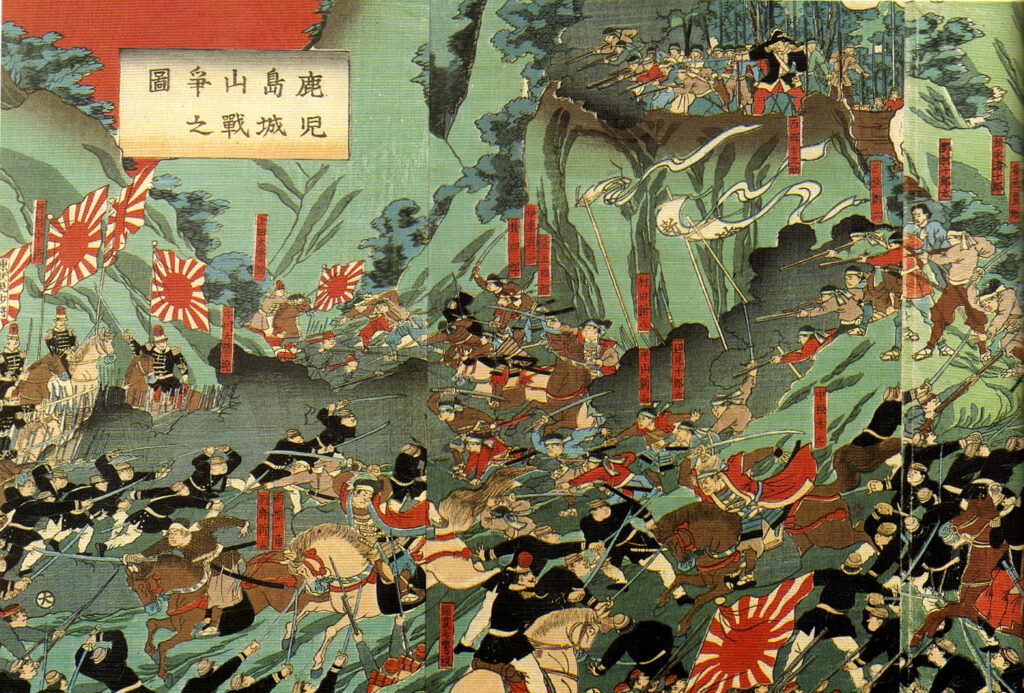
The final legendary warhorse on our list belonged to Saigō Takamori, the “Last Samurai” who led the Satsuma Rebellion against the modernizing Meiji government. Honmaru was a massive Japanese native breed horse with uncommonly thick legs and remarkable endurance, capable of carrying the notably large Saigō for days without rest. Historical accounts describe how Honmaru survived multiple modern artillery bombardments during the rebellion, seemingly impervious to the shell shock that affected other horses. During the final battle at Shiroyama in 1877, Honmaru carried the wounded Saigō through Imperial army lines multiple times, reportedly sustaining several bullet wounds but continuing to fight. According to eyewitness accounts, when Saigō was finally forced to commit seppuku after defeat became inevitable, Honmaru broke free from his handlers and charged back into battle alone, an act that was interpreted by supporters as the true samurai spirit manifesting in animal form. The fate of Honmaru remains disputed, with some accounts claiming the horse died on the battlefield and others maintaining that local farmers hid and protected the famous steed for years afterward.
Legacy of the Legendary Samurai Steeds

The legendary horses of Japan’s samurai era transcended their roles as mere military assets to become cultural icons whose stories continue to influence Japanese art, literature, and even modern horse breeding programs. Many traditional Japanese horse festivals, particularly in regions historically associated with samurai cavalry, feature reenactments of famous horses and their masters. The bloodlines of some legendary steeds were meticulously preserved through Japan’s native horse breeding programs, with certain distinctive markings or colorations still being specially noted in modern Japanese horse registries. Perhaps most significantly, the samurai horse tradition established a uniquely Japanese approach to horsemanship that emphasized the spiritual bond between rider and mount, a philosophy that continues in specialized Japanese equestrian disciplines today. As modern Japan embraced mechanization, the practical role of horses diminished, but the cultural memory of these magnificent animals remains vibrant in festivals, art, and stories passed down through generations.
The legendary horses of Japan’s samurai era represent more than just remarkable animals—they embody the complex relationship between warriors and their mounts in a society where horses were both practical necessities and powerful symbols. From Ikezuki’s river-crossing courage to Honmaru’s final charge, these equine heroes demonstrate how deeply horses were integrated into the samurai experience. Their stories reveal a culture that recognized animal partners as essential elements of warfare, status, and identity. As Japan modernized and the samurai class faded into history, these legendary horses transitioned from battlefield companions to cultural symbols, their stories preserved as testaments to an era when the fate of nations could turn on the speed, courage, and loyalty of these extraordinary animals. In contemporary Japan, where few ride horses in daily life, the legends of these great steeds endure, connecting modern Japanese to their warrior heritage and reminding us of the timeless bond between humans and horses.

